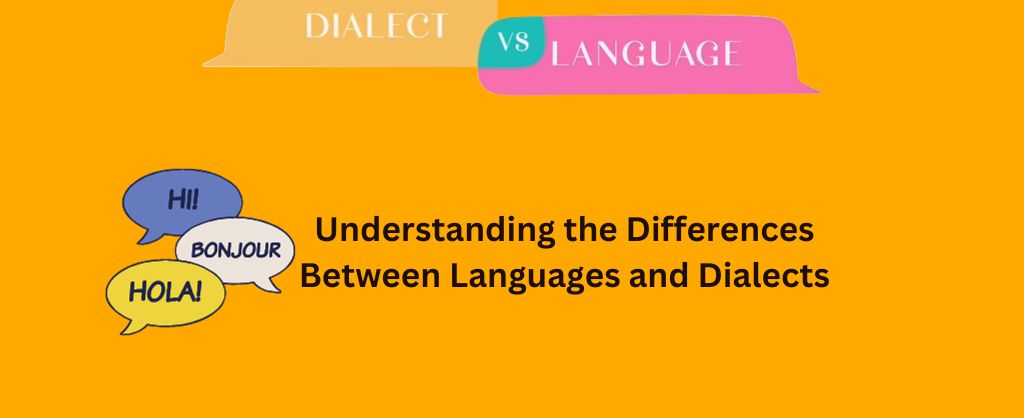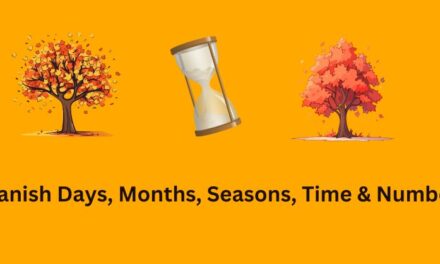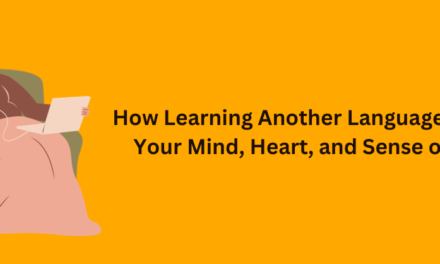Understanding the Differences Between Languages and Dialects

What makes a language truly distinct from a dialect? That’s a question linguists have grappled with for ages. At first glance, it seems straightforward – languages are different from each other, while dialects are versions of the same language. But peek beneath the surface, and you quickly realize it’s far more complicated.
The boundaries get fuzzy. The criteria get messy. Politics and identity come into play. This article will explore the intricate differences between languages and dialects in depth.
To start, let’s review some basic definitions. Then we’ll dive into the tricky distinctions and debatable grey areas that make this such a thorny linguistic puzzle.
A Quick Refresher on Key Differences
First, a quick terminology recap:
- A language is a complete communication system with its own rules for sounds (phonetics), words (lexicon), grammar and sentence structure. Languages can sometimes be mutually unintelligible, meaning speakers of one don’t understand speakers of another.
- A dialect is a variation of a language that’s still largely intelligible to other speakers of that language. Dialects have minor differences in vocabulary, pronunciation and grammar, but speakers can mostly understand each other.
So at a basic level:
- Languages = distinct systems. Potentially unintelligible across languages.
- Dialects = variations of the same system. Still mutually intelligible.
But that’s just scratching the surface! Now let’s uncover the intricacies that make distinguishing languages vs. dialects complex.
The Blurry Lines Between Languages and Dialects
If only it were as simple as the definitions above. Real-world language use gets messy in all sorts of ways that blur the lines:
Mutual Intelligibility Isn’t Always Clear-Cut
Often people define languages as unintelligible while dialects are mutually intelligible. But intelligibility between speech varieties exists on a gradual continuum – it’s not black and white.
Some languages have high intelligibility (e.g. Spanish and Italian). Some dialects can be only partially intelligible (e.g. local Chinese “dialects”). Where do you draw the line? It gets subjective and debatable.
Written vs. Spoken Forms
Languages often have standardized writing systems while dialects exist mainly in spoken form. But not always! Some generally recognized languages like Scots and Swiss German lack formal written standards but are still considered languages.
And written forms can be highly political. Serbian and Croatian are considered different languages largely because of different scripts.
State Policies and Identity Play a Role
A country’s official policies carry weight in categorizing national languages vs. regional dialects. So do feelings of ethnic or national identity.
Groups often declare distinct languages for political reasons even when linguistically they may be dialects. This has happened with Hindi vs. Urdu, Moldovan vs. Romanian, and more.
Prestige and Power Influence Perceptions
Language varieties associated with social power and high prestige get labeled as distinct languages more readily. Regional dialects of the powerful majority language may not get the same status. Compare Mandarin vs. Provincial Chinese varieties.
Fuzzy Boundaries and Transitional Continuums
Even close linguistic analysis reveals hazy boundaries and gradual transitions between speech forms across regions. Clear dialect lines are elusive. Isoglosses try to map this but can’t impose firm borders on the fuzzy continuum of variation.
Challenging Examples That Defy Simple Classification
Looking at real-world linguistic landscapes reveals just how complex the language vs. dialect distinction can be:
Arabic
What we call “Arabic” is a macrolanguage encompassing many varieties like Egyptian Arabic, Moroccan Arabic, Iraqi Arabic, etc. Linguists differ on how many separate languages exist within Arabic, ranging from 1 to over 30! The boundaries are a puzzle.
German Dialects
Localized German dialects can vary tremendously by region – so much so that speakers may not understand each other. Yet politically they are considered dialects of one German language. Mutual intelligibility does not align with conventional designations.
Chinese “Dialects”
Chinese presents a famous dilemma. Mandarin, Cantonese, Hakka, etc. are called dialects but are not mutually intelligible. Linguistically they could be separate languages. Shared cultural identity keeps them under the Chinese umbrella. A political designation that contradicts intelligibility-based definitions.
Hindi-Urdu Controversy
Hindi and Urdu are practically identical in spoken form but use different scripts. After Partition, religious tensions led the varieties to be politicized into separate languages. Despite linguistic similarities, socio-religious identity made them viewed as distinct languages rather than Hindustani dialects.
Norwegian vs. Danish
Norwegian and Danish are close enough to allow partial mutual intelligibility. Yet they are considered distinct languages, while Norwegian itself contains dialects far less intelligible than Danish! Sociolinguistic criteria don’t neatly explain these designations. Political and identity factors are at play.
Dari vs. Persian
Dari, an official language of Afghanistan, is a dialect of Persian phonologically, grammatically and lexicographically. But for political reasons it is classified as a distinct language. Social identity again overrides purely linguistic considerations.
Scholarly Perspectives on Language vs. Dialect
Faced with these complexities, academic linguists over the decades have formulated theories and models to grapple with the language vs. dialect dilemma:
Structuralism
Early structuralists sought clear linguistic criteria to distinguish languages from dialects. Phonological and grammatical differences were viewed as key. But structuralism failed to account for unintelligible languages and intelligible “dialects”. Too much ambiguity remained unsolved.
Mutual Intelligibility
Basing language identity on mutual intelligibility between speakers became popular. But as we’ve seen, intelligibility is subjective and gradual. German dialects challenge this view. Scots and Swiss German highlight its limits.
Ecology and Identity
More recent models recognize that languages are shaped by social, cultural, economic and political ecologies. Communities may see identity factors as more relevant than intelligibility in determining language status. This helps explain many conflicting cases.
Dialect Continuum
William Labov proposed dialects exist on a continuous spectrum of gradual change rather than in discrete categories. This fits many ambiguous cases like Arabic and Chinese “dialects”. But what thresholds determine when continuum varieties become distinct languages remains debatable.
Pluricentric Languages
Clyne’s pluricentricity model recognizes major languages like English have multiple international standard varieties or dialects. This challenges traditional language vs. dialect hierarchies in a globalized world.
Postmodernism
Some postmodernists contend language vs. dialect is a social construct reflecting power structures more than objective reality. Named languages carry more prestige. Decision-making criteria depend on who dominates in society.
While these perspectives evolved our understanding, the complexities persist!
Why It Matters: Impacts of Language vs Dialect Designations
The intricacies between languages and dialects aren’t just of academic interest. These designations carry real-world consequences:
- Identity: Language identity intertwines deeply with feelings of local, ethnic and national identity. Perceived threats to identity affect language attitudes.
- Politics: Language status is tied to issues of autonomy, ethnic power/domination, the language policies states enforce, and regional minorities’ rights.
- Education and literacy: Whether a speech variety has a standard written form can determine its use in schools and media. Dialects are disadvantaged.
- Prestige: Dominant languages are seen as superior. Dialects of lower power groups may be stigmatized. Negative attitudes marginalize minority dialect speakers.
- Documentation and corpus development: Priorities for what materials, dictionaries and corpuses get created depend on whether varieties are considered worthy languages.
- Theory: Debates surrounding classifications inform sociolinguistic, language contact and evolutionary theories. Disagreements propel advances in understanding.
Clearly, the intricacies between language and dialect designations reflect deeper societal complexities. There are no value-neutral scientific solutions, just gradual progress in perspectives.
Conclusion: An Intricate Linguistic Puzzle
Stepping back, we can appreciate what a multifaceted issue distinguishing languages from dialects really is. Any simplistic definitions fail to capture all the sociopolitical factors that shape language identity and attitudes.
Mutual intelligibility alone does not determine status and perceptions. Politically charged identity issues create paradoxes that defy clear categorization. The influence of standardization, prestige, power, ethnicity and nationalism all demonstrate this intricate interplay of linguistic and social forces.
While academic theories enhance our nuanced understanding over time, the complexities will not disappear. Moving forward requires acknowledging ambiguities, respecting the continuum nature of language, and considering emic views from speech communities themselves.
Only through appreciating all the intricacies can we insightfully navigate the question “what is a language?” in our diverse, globalized world. This intricate puzzle ensures linguists will continue grappling with languages and dialects for generations to come!









